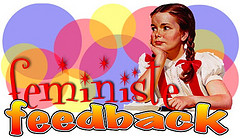 A reader writes in asking for some assistance:
A reader writes in asking for some assistance:
We always speak freely with our daughter about things like the difference between sex and gender and we try to emphasize that she is free to define her own gender in a manner in which she sees fit. Being two cisgendered, hetero people, this isn’t always easy, but we are doing the best we can to keep our privilege in check as we approach this. We try to emphasize that gender is fluid, on a chromatic spectrum, not a binary structure.
Recently, she wore a tie to school and was picked on by a boy who called her a “half boy”, to which she replied “So?”. We were proud that she had the strength to say so, but she did ask us what was wrong with being a “half boy”. Of course we told her nothing was wrong with it, but we are finding that as she explores gender identity more, and as she moves through it, we don’t always have all of the answers.
She would really love some age appropriate reading material to help her through this exploration. She is eight, and in second grade, with a reading level that is about two grade levels higher, but given the sensitivity of the material, I am more concerned about age appropriateness. We use Robie Harris books for development, and she really likes those. I was hoping that the Feministe crowd could suggest some more material that might be helpful.
What say you, readers? Can you supply our reader’s kid (who sounds rather fabulous!) with any age-appropriate reading material that will help with her gender exploration?
Don’t forget to send your questions to feministe@gmail.com